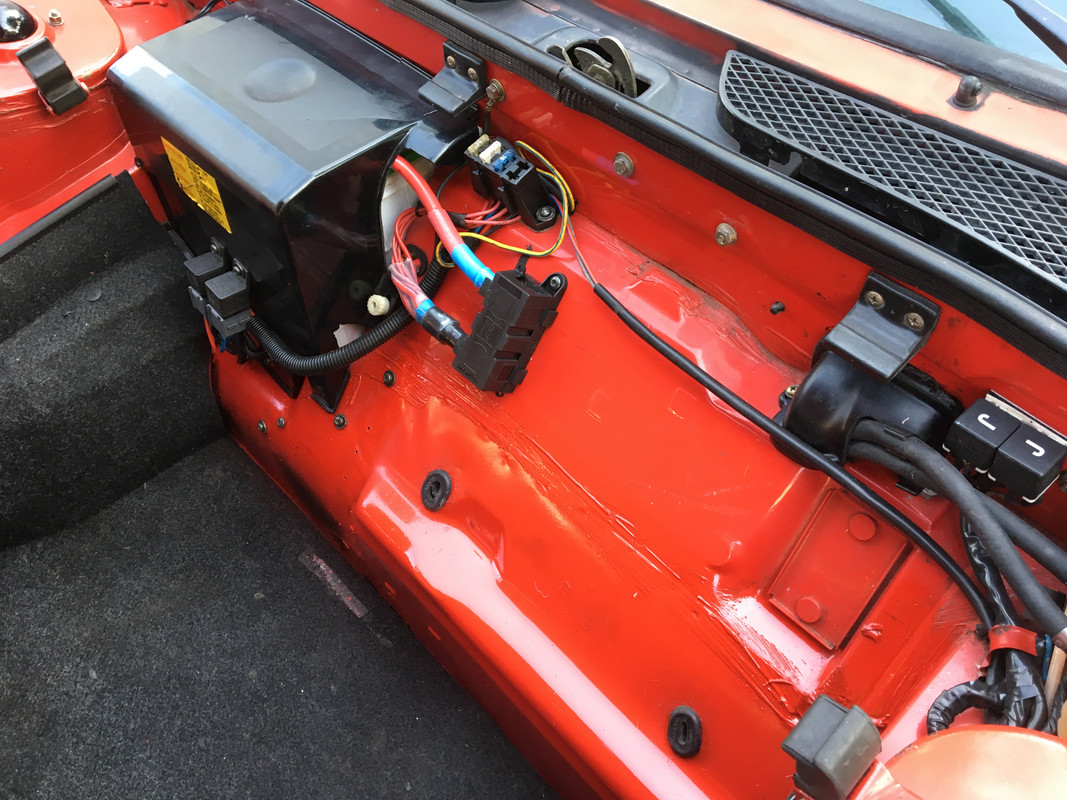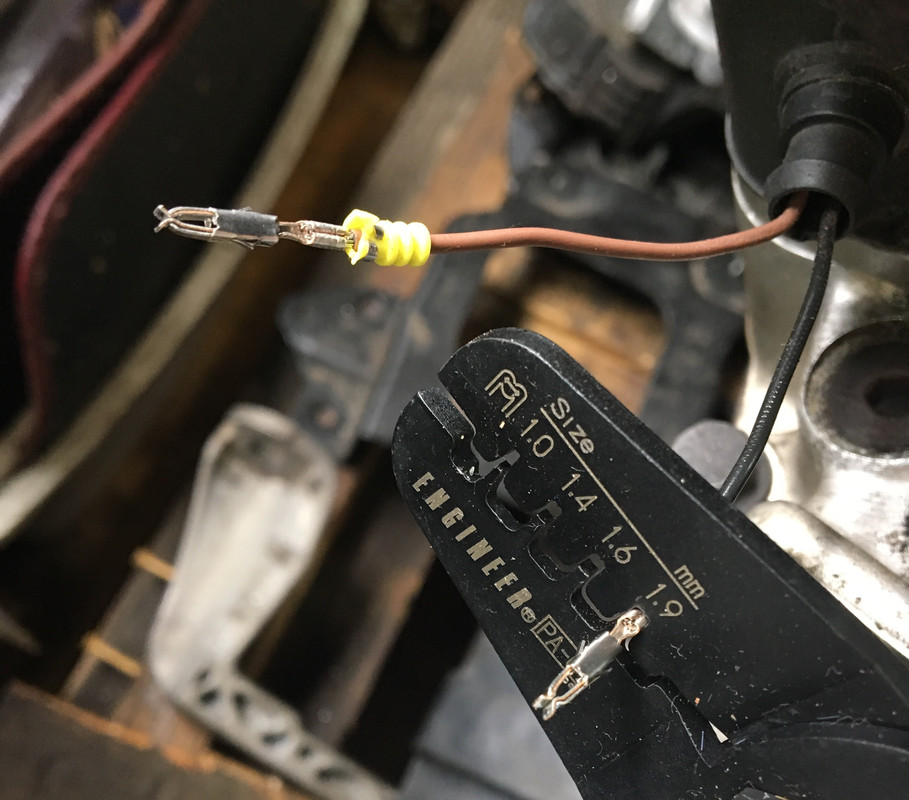kmead
Old enough to know better
The VW part has fusible links (ie big fuses) as the links to the large outputs. The three to the side are fuses and would be good for feeds to the headlight relays and the wiper relays.
If you are near a pickapart or similar, this can be found on any 1999 New Beetle, Golf or Jetta through 2005 (longer on the New Beetle which stayed in production longer). While there you could savage the rest of the harness to get the factory made primary leads, particularly the connector for the three fused circuits with some length of factory wire.
MWB sells the grommet used for the wires to go into the cabin so if you wanted to run an additional heavy gauge wire into the cabin from this for the BWM it would make it clean and easy.
The link Dan offered, the items that company sells are excellent and accommodate either soldering or crimping. Given the limited space I really liked the right angle ones.
As you think about this and the easily available batteries (hard to find a 24F at times) you could ensure a modern broad application battery could be more easily accommodated with the cables making install and future compatibility easier.
If you are near a pickapart or similar, this can be found on any 1999 New Beetle, Golf or Jetta through 2005 (longer on the New Beetle which stayed in production longer). While there you could savage the rest of the harness to get the factory made primary leads, particularly the connector for the three fused circuits with some length of factory wire.
MWB sells the grommet used for the wires to go into the cabin so if you wanted to run an additional heavy gauge wire into the cabin from this for the BWM it would make it clean and easy.
The link Dan offered, the items that company sells are excellent and accommodate either soldering or crimping. Given the limited space I really liked the right angle ones.
As you think about this and the easily available batteries (hard to find a 24F at times) you could ensure a modern broad application battery could be more easily accommodated with the cables making install and future compatibility easier.



